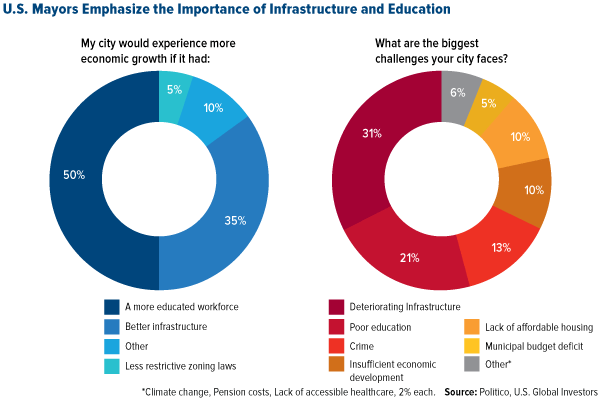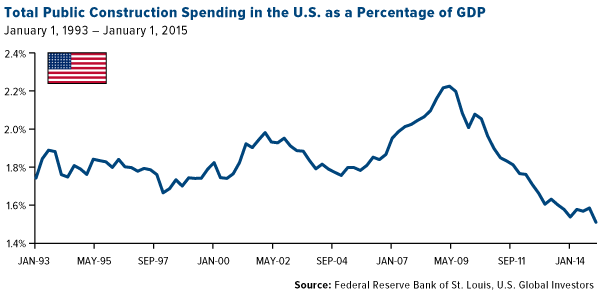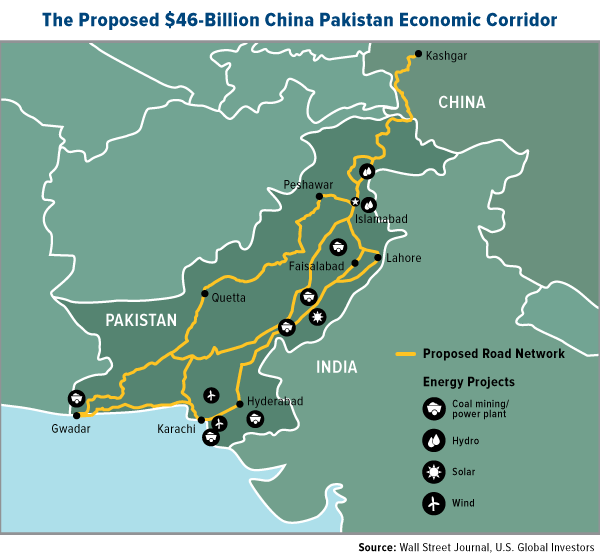As one of the greatest nations on the planet, the United States excels in a number of areas, innovation and entrepreneurship foremost among them. But something you might be hard-pressed to find at the top of anyone’s best-of list is infrastructure—specifically roads, rail and mass transit.
In this department at least, the U.S. has some catching up to do with other parts of the globe. The World Economic Forum’s Global Competitiveness Report 2014-2015 ranks the U.S. 16th in “quality of overall infrastructure”—15th in quality of its rail system and 16th in quality of its roads.
Heavy news indeed for the country known for building the first-of-its-kind transcontinental railway and interstate highway system.
But if you’ve been keeping up with current events, this shouldn’t come as a shock. The recent and very tragic Amtrak derailment in Philadelphia is a somber reminder that America needs stronger infrastructure policies at every level of government. This will not only help save lives but also create jobs, boost the economy and make transportation more safe and efficient.
Civil engineers have been making this case for years. Following its most recent assessment of all forms of infrastructure, from energy to schools to drinking water, the American Society of Civil Engineers (ASCE) gave the U.S. a depressingly low overall grade of D+. Levees and inland waterways were the worst offenders, both slapped with a D-. According to the group, which releases its report every four years, a staggering $3.6 trillion will be necessary by 2020 to bring the nation’s infrastructure up to ideal conditions. Short of this investment, the ASCE says, $1 trillion in U.S. business sales could be lost every year, along with millions of jobs.
The mayors of some of the largest U.S. cities emphatically acknowledge the relationship between quality infrastructure and strong economic growth. In a recent poll taken of several mayors, Politico magazine found that infrastructure sits atop their list of concerns. Thirty-five percent cited “better infrastructure” as the one thing that could help their city’s economy grow the most; 31 percent said that “deteriorating infrastructure” was the city’s greatest challenge. 
But public spending on infrastructure, at every level, has declined pretty rapidly as a percentage of GDP since the recession, falling well below its lowest point in the last 20 years. 
And now, some emerging regions, most notably China, are chugging ahead with large-scale construction projects, both domestic and international, that promise to kick-start business, strengthen trade routes and safely connect people from all corners or their borders.
One Road, One Belt… Big Opportunity
Whereas the U.S. spends less than 2 percent of its GDP on infrastructure, China currently spends around 9 percent on both domestic and foreign projects. Back in December, I pointed out that China has the most extensive network of high-speed rail in the world—approximately 7,000 miles’ worth, all told—with thousands more miles of track under construction. This will require untold amounts of natural resources.
And with China’s grand “One Road, One Belt” initiative underway, even more resources will be needed. The strategy, which harkens back to the famed Silk Road, is intended to open up new trade routes to Southeast Asia, the Middle East and Eastern Europe.
The flagship project of One Road, One Belt is the China Pakistan Economic Corridor, an elaborate series of roads, rail and pipeline that will cut lengthwise through Pakistan, giving China convenient access to ports on the Arabian Sea. Along the way, several energy projects are slated to be built. 
If everything goes according to plan, the entire 2,000-mile corridor, expected to take 15 years to complete, should come in at around $46 billion, making it one of the most expensive infrastructure projects in human history.
It’s certainly the most China will have ever spent in another country. If you recall, it’s now investing more money outside its borders than it is domestically, having exceeded $100 billion for the first time in 2014. The country is investing so heavily in Africa, in fact, that some economists have nicknamed it “China’s Second Continent.”
Here’s hoping China sees huge returns on their investment.
- English (UK)
- English (India)
- English (Canada)
- English (Australia)
- English (South Africa)
- English (Philippines)
- English (Nigeria)
- Deutsch
- Español (España)
- Español (México)
- Français
- Italiano
- Nederlands
- Português (Portugal)
- Polski
- Português (Brasil)
- Русский
- Türkçe
- العربية
- Ελληνικά
- Svenska
- Suomi
- עברית
- 日本語
- 한국어
- 简体中文
- 繁體中文
- Bahasa Indonesia
- Bahasa Melayu
- ไทย
- Tiếng Việt
- हिंदी
What America Can Learn From China's Infrastructure Push
Published 05/22/2015, 10:11 AM
What America Can Learn From China's Infrastructure Push
Latest comments
Loading next article…
Install Our App
Risk Disclosure: Trading in financial instruments and/or cryptocurrencies involves high risks including the risk of losing some, or all, of your investment amount, and may not be suitable for all investors. Prices of cryptocurrencies are extremely volatile and may be affected by external factors such as financial, regulatory or political events. Trading on margin increases the financial risks.
Before deciding to trade in financial instrument or cryptocurrencies you should be fully informed of the risks and costs associated with trading the financial markets, carefully consider your investment objectives, level of experience, and risk appetite, and seek professional advice where needed.
Fusion Media would like to remind you that the data contained in this website is not necessarily real-time nor accurate. The data and prices on the website are not necessarily provided by any market or exchange, but may be provided by market makers, and so prices may not be accurate and may differ from the actual price at any given market, meaning prices are indicative and not appropriate for trading purposes. Fusion Media and any provider of the data contained in this website will not accept liability for any loss or damage as a result of your trading, or your reliance on the information contained within this website.
It is prohibited to use, store, reproduce, display, modify, transmit or distribute the data contained in this website without the explicit prior written permission of Fusion Media and/or the data provider. All intellectual property rights are reserved by the providers and/or the exchange providing the data contained in this website.
Fusion Media may be compensated by the advertisers that appear on the website, based on your interaction with the advertisements or advertisers.
Before deciding to trade in financial instrument or cryptocurrencies you should be fully informed of the risks and costs associated with trading the financial markets, carefully consider your investment objectives, level of experience, and risk appetite, and seek professional advice where needed.
Fusion Media would like to remind you that the data contained in this website is not necessarily real-time nor accurate. The data and prices on the website are not necessarily provided by any market or exchange, but may be provided by market makers, and so prices may not be accurate and may differ from the actual price at any given market, meaning prices are indicative and not appropriate for trading purposes. Fusion Media and any provider of the data contained in this website will not accept liability for any loss or damage as a result of your trading, or your reliance on the information contained within this website.
It is prohibited to use, store, reproduce, display, modify, transmit or distribute the data contained in this website without the explicit prior written permission of Fusion Media and/or the data provider. All intellectual property rights are reserved by the providers and/or the exchange providing the data contained in this website.
Fusion Media may be compensated by the advertisers that appear on the website, based on your interaction with the advertisements or advertisers.
© 2007-2025 - Fusion Media Limited. All Rights Reserved.
